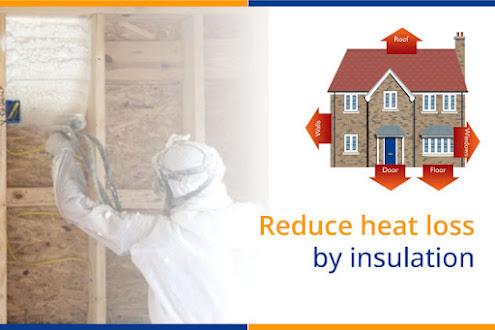How loft insulation can reduce energy loss in a house?
An attic or topmost part of a house is referred to as a loft. Insulation is a substance that keeps heat or sound inside a space. There is no doubt that you require loft insulation if you possess a loft. One of the most important factors in making your house warm and less expensive to run is to prevent heat loss, regardless of whether you are looking to buy new construction, renovate your existing home, or just looking to renovate a room in your home. Less heat loss means less heating is needed, which means cheaper energy and financial costs for heating. Effective loft insulation in the UK can save your heating costs by up to £250 a year while also reducing your carbon footprint.
The only insulation required to keep heat from entering a cold loft is that found between the floor joists. This has the benefit of being inexpensive and reasonably simple to install. However, it exposes the loft to temperature changes and dampness. If you want to store goods that are sensitive to either or if you want to use the area for activities, a cold loft wouldn't be the best choice.
On the contrary hand, the insulation is split between the loft floor and again the underneath of the roof to create a warm loft. Thus, some heat can enter the loft and help to control its temperature, but it cannot escape through the roof. A warm loft can be put to a much wider variety of uses, but it is more difficult and expensive to insulate the rafters than it is to do so between the joists.
What is the best loft insulation material in the UK?
Since each of the insulation kinds serves a distinct purpose and has a different application, it is difficult to determine which type is the "best." The insulation you select for the loft will primarily depend on the usage you have in mind for the loft space. Spray foam insulation for a loft is the best in the UK.
You can use it to insulate your
loft, walls, floors, roof, and other areas. Since it is a good insulator and is
able to control air leakage, it has been utilized for more than thirty years
and is now gaining popularity.
Cost to insulate Loft
Another question that hits our mind
is possibly what can be the average cost of loft insulation. And the cost of loft insulation
ranges from £5 to £11 per sq meter on average. This suggests that insulating a
separate 4-bedroom home shouldn't cost more than roughly £1250. Moreover, the size of the home and a
few other criteria affect how much insulation costs. Again the type of
insulation you install is one important consideration.
Loft insulation costs more than just the expense of labor and materials.
You should be aware of these
additional loft insulation costs because they may increase the price of
installing loft insulation like the cost of Insulating Pipes. You must
also insulate any pipes if you have them in your loft.
They might freeze over if you don't
during the chilly UK winter. A hatch or ladder is necessary for
accessing your loft. You should prepare to spend between
£350 and £400 if you purchase these things all at once. While you can put blanket insulation
on your own, a professional installation is necessary for other forms of loft insulation costs in the UK.
How to reduce heat loss by insulation?
Insulating the ceiling of the loft
cavity is the simplest approach to stop heat loss from roofs. It is critical to
fill in any gaps around hatches, electrical, and piping, as well as to insulate
the loft or ceiling adequately. There is a quick test to determine whether
there are any openings or leaks. Simply check at the roof on a cold morning, if
you notice any spots lacking frost, you can be sure that there are insulation
gaps or air leaks because these areas will also lack frost.
If your property doesn't even have a roof or attic insulation, some energy suppliers will add this for you. It is
worth asking your provider if your home is eligible because this can reduce
your heating costs. Any gaps or cracks in the flooring, walls, or ceilings should be filled to stop heat loss.
Conclusion:
But spray foam insulation could
possibly be worth the additional cost to you if you can see the advantages of
properly insulating your modern building home from the beginning for comfort,
electricity saving month after month, and fewer hassles while you reside in the
home.
Increased loft insulation can decrease
heat loss by slowing the upward movement of air. The insulation's fibers may
also stop stale air from circulating and generating convection currents. There
are additional easy methods, such as installing carpets, underlays, and
curtains, to lessen the overall heat loss. Keeping this habit to a limit can
significantly curtail heat loss.
Related articles:
- Price Comparison for Loft Insulation in 2022 (per meter square UK)
- The Full Cost of Insulating your Loft: How to Save in 2022
- Open Cell vs Closed Cell Foam Insulation: Which is Better for My Home?
- 5 Ways to Reduce your Household Energy Cost



Comments
Post a Comment